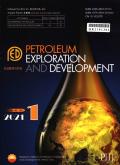Adsorption damage mechanism and control of fracturing fluid thickener in deep coal rock
IF 8
Q1 ENERGY & FUELS
引用次数: 0
Abstract
Static adsorption and dynamic damage experiments were carried out on typical 8# deep coal rock of the Carboniferous Benxi Formation in the Ordos Basin, NW China, to evaluate the adsorption capacity of hydroxypropyl guar gum and polyacrylamide as fracturing fluid thickeners on deep coal rock surface and the permeability damage caused by adsorption. The adsorption morphology of the thickener was quantitatively characterized by atomic force microscopy, and the main controlling factors of the thickener adsorption were analyzed. Meanwhile, the adsorption mechanism of the thickener was revealed by Zeta potential, Fourier infrared spectroscopy and X-ray photoelectron spectroscopy. The results show that the adsorption capacity of hydroxypropyl guar gum on deep coal surface is 3.86 mg/g, and the permeability of coal rock after adsorption decreases by 35.24%–37.01%. The adsorption capacity of polyacrylamide is 3.29 mg/g, and the permeability of coal rock after adsorption decreases by 14.31%–21.93%. The thickness of the thickener adsorption layer is positively correlated with the mass fraction of thickener and negatively correlated with temperature, and a decrease in pH will reduce the thickness of the hydroxypropyl guar gum adsorption layer and make the distribution frequency of the thickness of polyacrylamide adsorption layer more concentrated. Functional group condensation and intermolecular force are chemical and physical forces for adsorbing fracturing fluid thickener in deep coal rock. Optimization of thickener mass fraction, chemical modification of thickener molecular, oxidative thermal degradation of polymer and addition of desorption agent can reduce the potential damages on micro-nano pores and cracks in coal rock.
压裂液增稠剂在深部煤岩中的吸附损伤机理及控制
通过对鄂尔多斯盆地石炭系本溪组典型8#深部煤岩进行静态吸附和动态损伤实验,评价了羟丙基瓜尔胶和聚丙烯酰胺作为压裂液增稠剂在深部煤岩表面的吸附能力和吸附对渗透率的影响。利用原子力显微镜对增稠剂的吸附形貌进行了定量表征,并对增稠剂吸附的主要控制因素进行了分析。同时,利用Zeta电位、傅里叶红外光谱和x射线光电子能谱分析了增稠剂的吸附机理。结果表明:羟丙基瓜尔胶在煤深部表面的吸附量为3.86 mg/g,吸附后煤岩渗透率降低35.24% ~ 37.01%;聚丙烯酰胺的吸附量为3.29 mg/g,吸附后煤岩渗透率降低14.31% ~ 21.93%。增稠剂吸附层厚度与增稠剂质量分数呈正相关,与温度负相关,pH降低会使羟丙基瓜尔胶吸附层厚度减小,使聚丙烯酰胺吸附层厚度分布频率更集中。官能团凝聚和分子间作用力是深部煤岩吸附压裂液增稠剂的化学和物理作用力。优化增稠剂质量分数、对增稠剂分子进行化学改性、对聚合物进行氧化热降解和添加脱附剂可以降低对煤岩微纳孔隙和裂缝的潜在损伤。
本文章由计算机程序翻译,如有差异,请以英文原文为准。
求助全文
约1分钟内获得全文
求助全文

 求助内容:
求助内容: 应助结果提醒方式:
应助结果提醒方式:


